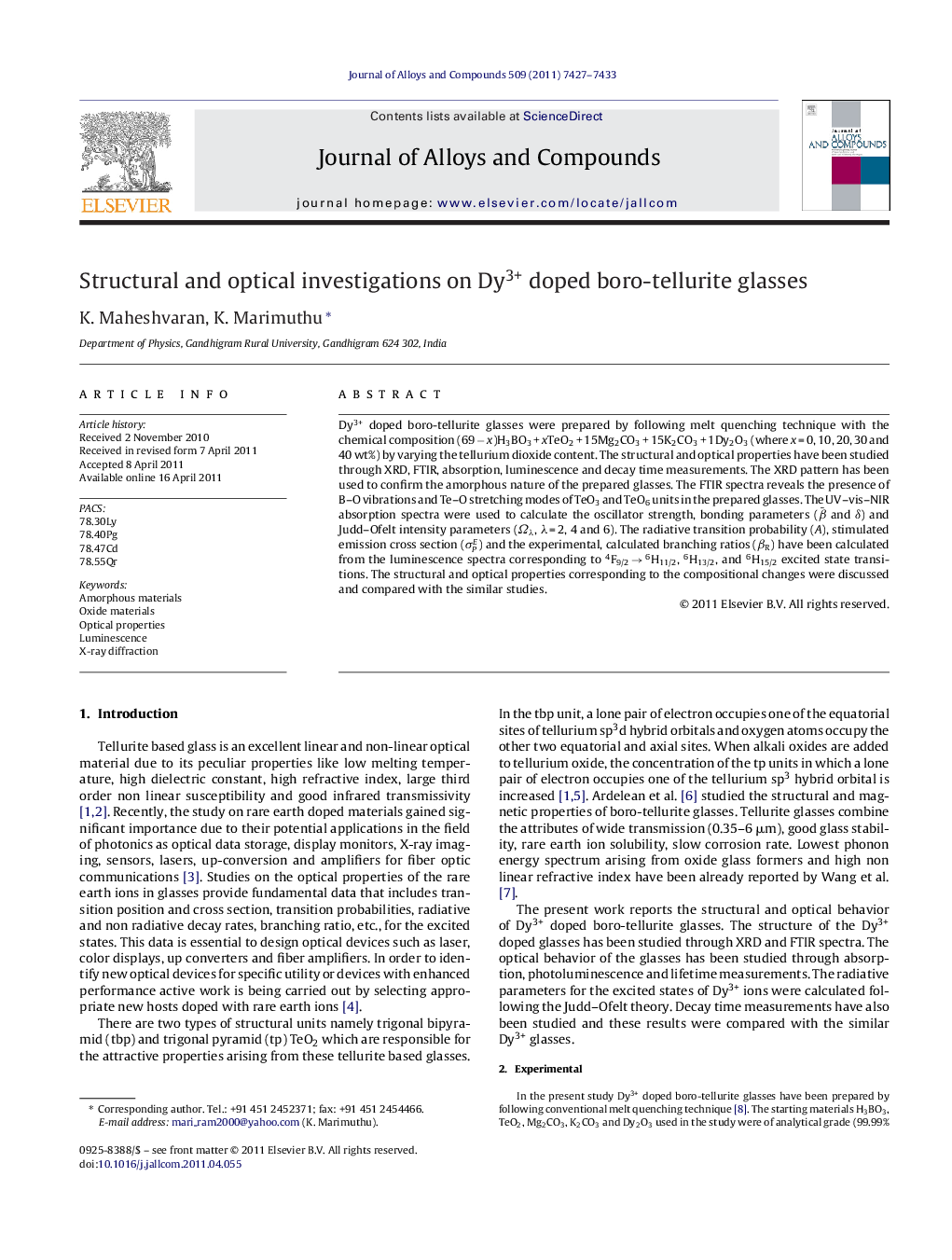| کد مقاله | کد نشریه | سال انتشار | مقاله انگلیسی | نسخه تمام متن |
|---|---|---|---|---|
| 1617510 | 1005688 | 2011 | 7 صفحه PDF | دانلود رایگان |

Dy3+ doped boro-tellurite glasses were prepared by following melt quenching technique with the chemical composition (69 − x)H3BO3 + xTeO2 + 15Mg2CO3 + 15K2CO3 + 1Dy2O3 (where x = 0, 10, 20, 30 and 40 wt%) by varying the tellurium dioxide content. The structural and optical properties have been studied through XRD, FTIR, absorption, luminescence and decay time measurements. The XRD pattern has been used to confirm the amorphous nature of the prepared glasses. The FTIR spectra reveals the presence of B–O vibrations and Te–O stretching modes of TeO3 and TeO6 units in the prepared glasses. The UV–vis–NIR absorption spectra were used to calculate the oscillator strength, bonding parameters (β¯ and δ) and Judd–Ofelt intensity parameters (Ωλ, λ = 2, 4 and 6). The radiative transition probability (A ), stimulated emission cross section (σPE) and the experimental, calculated branching ratios (βR) have been calculated from the luminescence spectra corresponding to 4F9/2 → 6H11/2, 6H13/2, and 6H15/2 excited state transitions. The structural and optical properties corresponding to the compositional changes were discussed and compared with the similar studies.
► The structural and optical properties have been studied through XRD, FTIR, absorption, luminescence and decay time measurements.
► The prepared glasses posses ionic nature and the ionic nature gradually increases when the tellurium di-oxide content increases in the host matrix.
► The radiative properties such as radiative transition probability (A), radiative lifetime (τrad), stimulated emission cross section (σPE) and branching ratios (βR) are calculated for the 4F9/2 → 6H15/2, 6H13/2 and 6H11/2 transitions.
► The decay curve of the 4F9/2 level of Dy3+:BXTD glasses is well fitted for single exponential.
► The stimulated emission cross section for the Dy3+:B3TD glass possess higher value and therefore it is suggested for suitable laser applications.
Journal: Journal of Alloys and Compounds - Volume 509, Issue 27, 7 July 2011, Pages 7427–7433